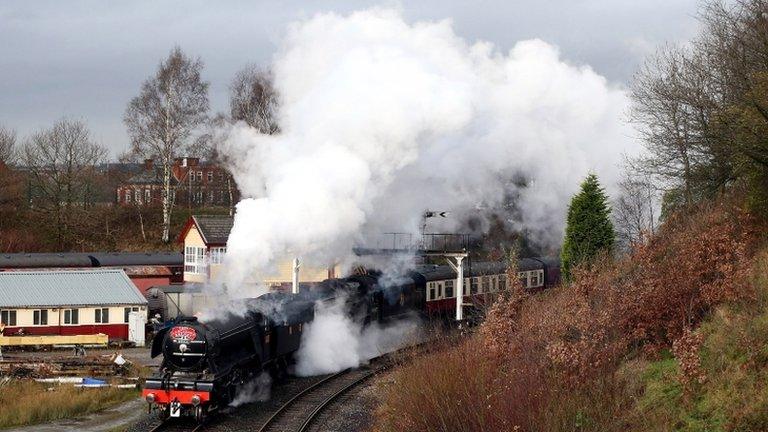In Pictures: Flying Scotsman returns to tracks for tests
- Published
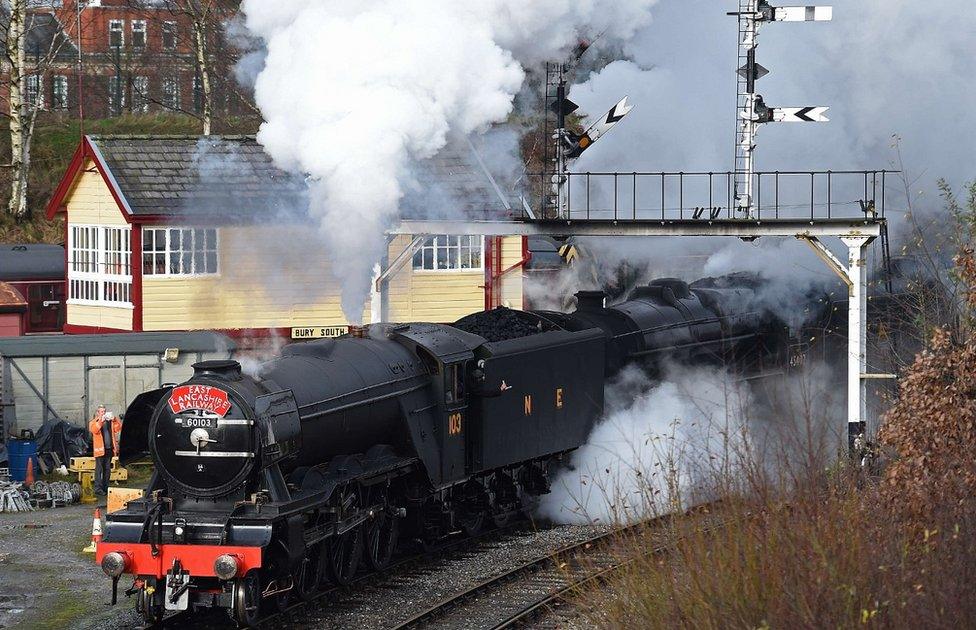
Flying Scotsman left its shed for testing on the East Lancashire Railway earlier
Flying Scotsman, one of the best-known railway locomotives, has finished its first public test-run after a £4.2m restoration project.
Testing has taken place along the East Lancashire Railway in Greater Manchester.
Specialist engineers at Riley and Son Ltd started work on the engine in 2006.
The first run saw it move out of its shed and travel a short distance down the track to the heritage line's Bolton Street station in Bury.
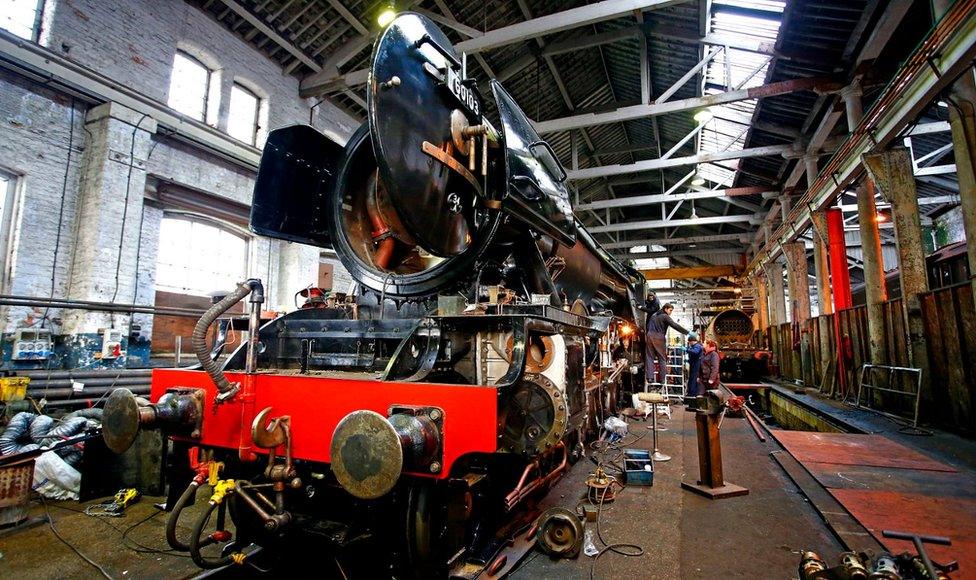
Maintenance work has been carried out on Flying Scotsman in Bury, Greater Manchester
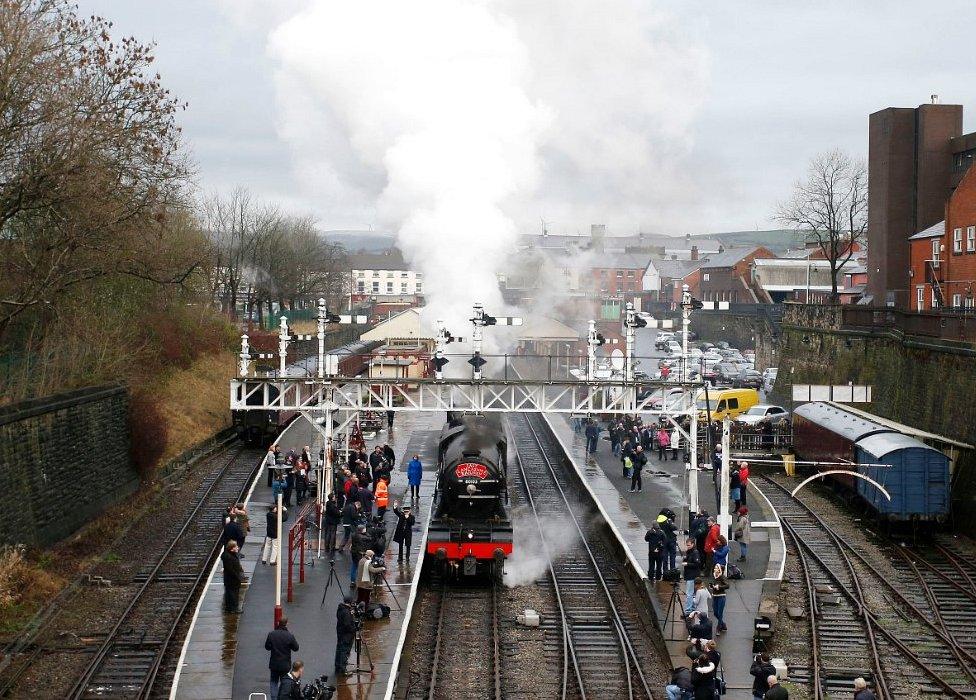
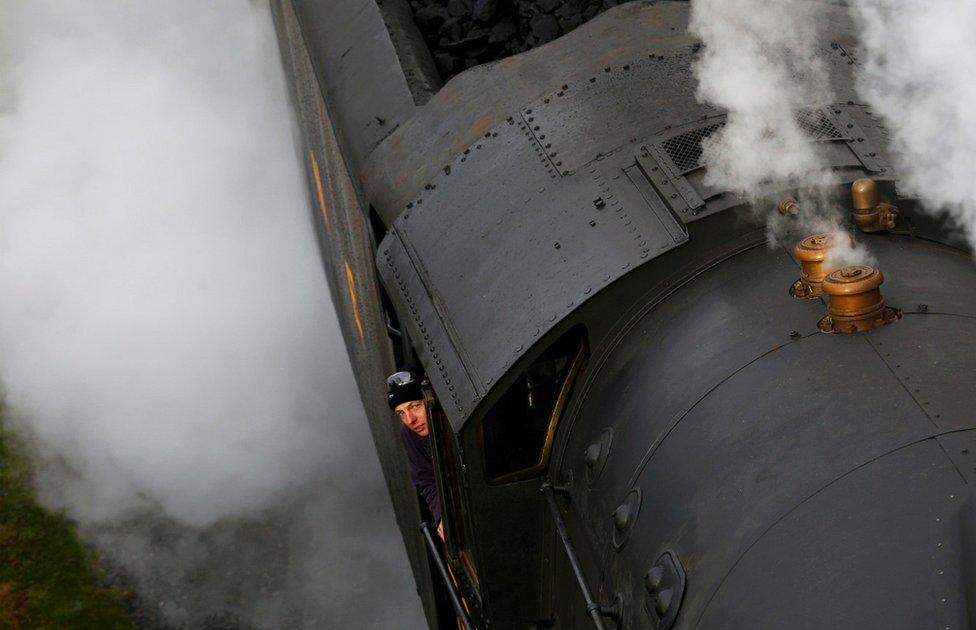
The engine, which was retired from service in 1963, has been restored for York's National Railway Museum (NRM).
A mainline test from Manchester to Carlisle over the Ribblehead viaduct is due to take place on 23 January.
It's expected to journey from London's King's Cross to York in late February.
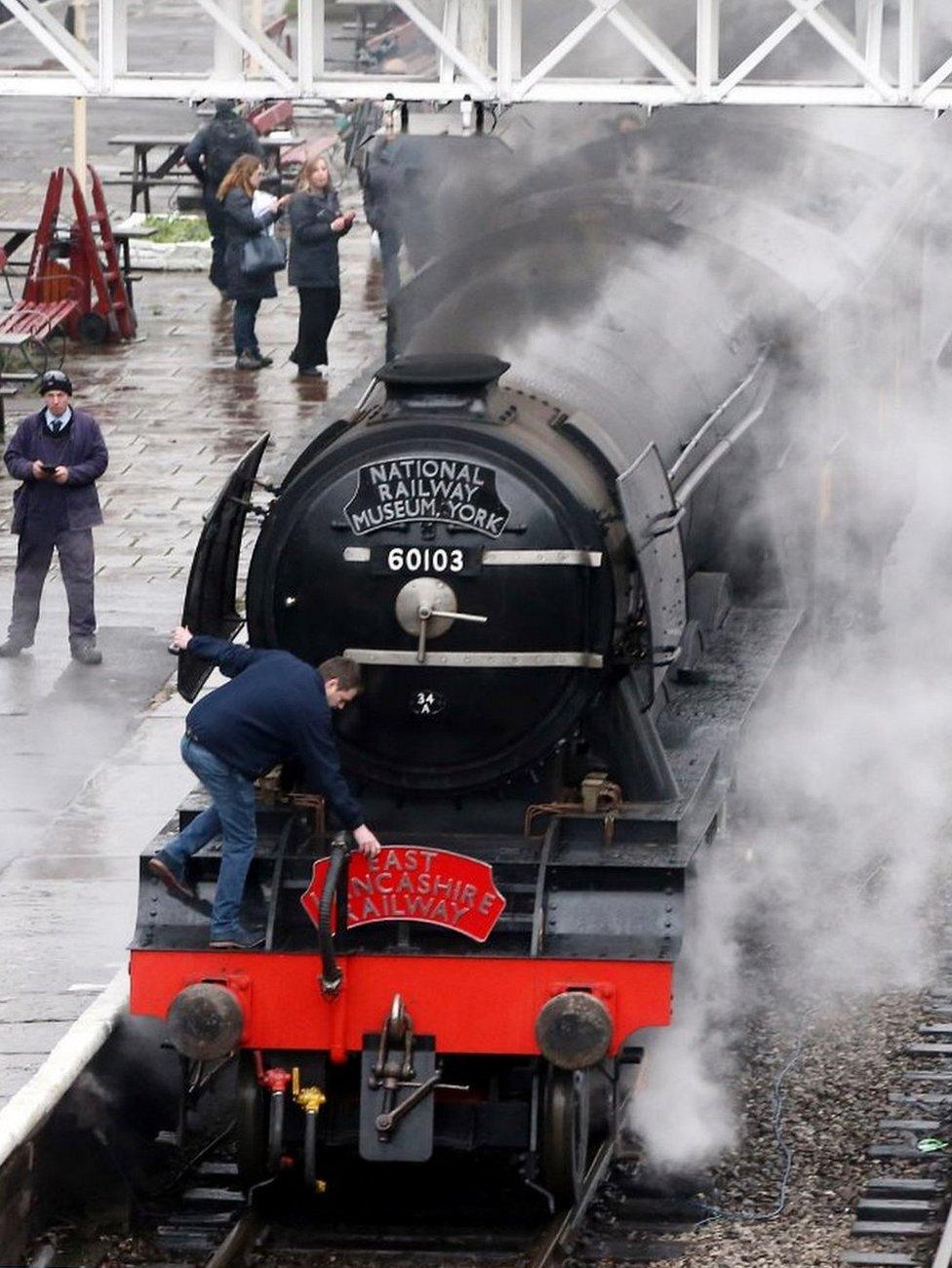
The front name plate at the front of Flying Scotsman was changed before it left Bolton Street station in Bury
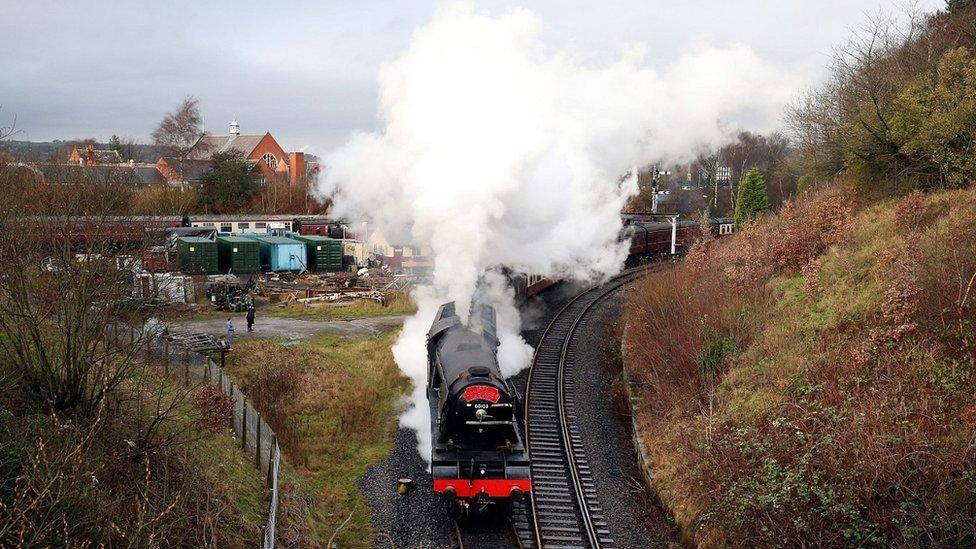
Keith Howarth, station master at Bury, described it as an "unbelievable sight".
He said: "I've seen it for months in the sheds, but now it's out on the tracks in the station and it's ready to go."
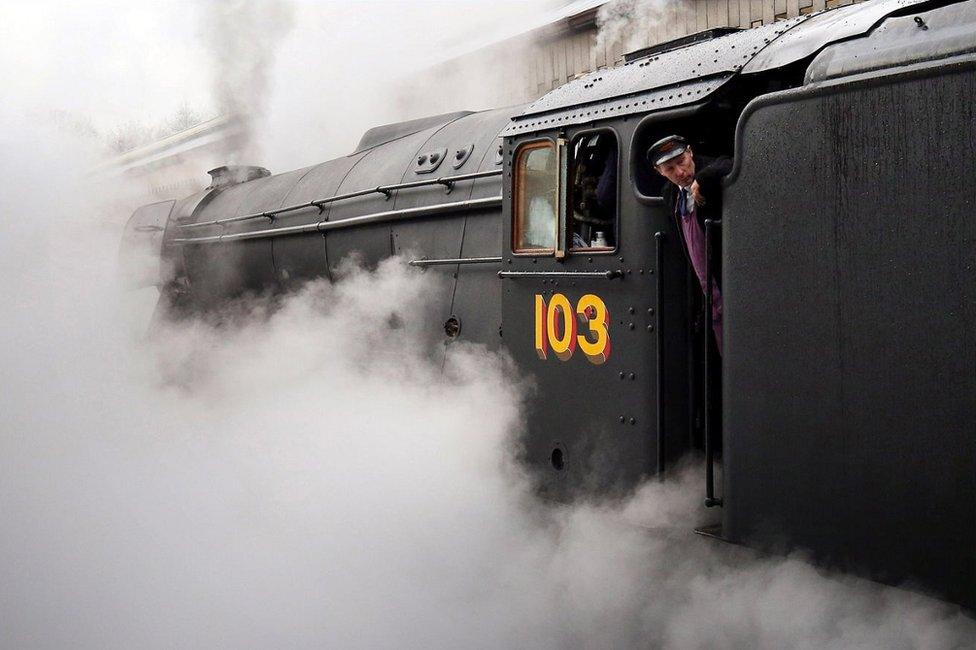
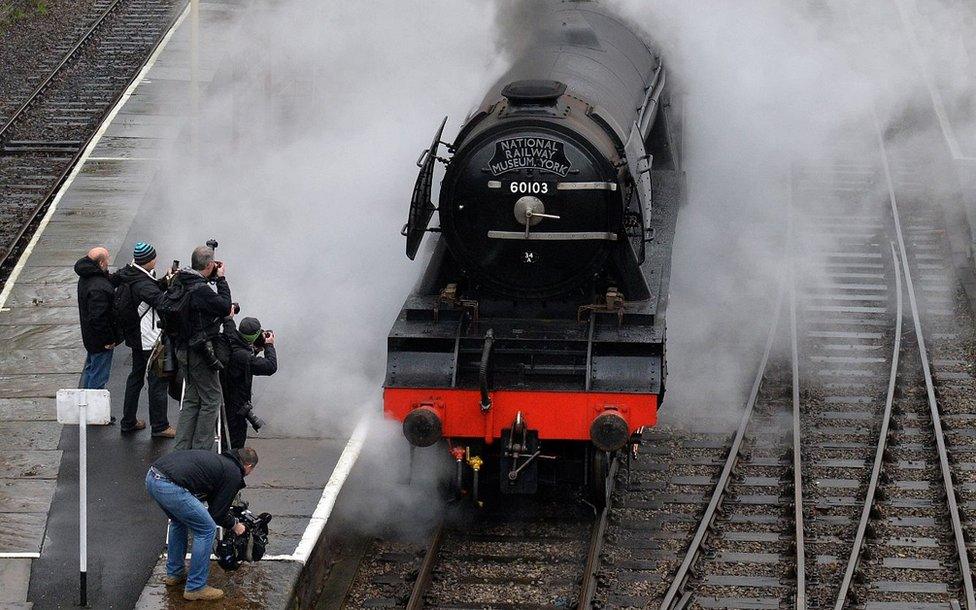
The first public testing of the locomotive after a decade away from the tracks sparked interest from railway enthusiasts and the media
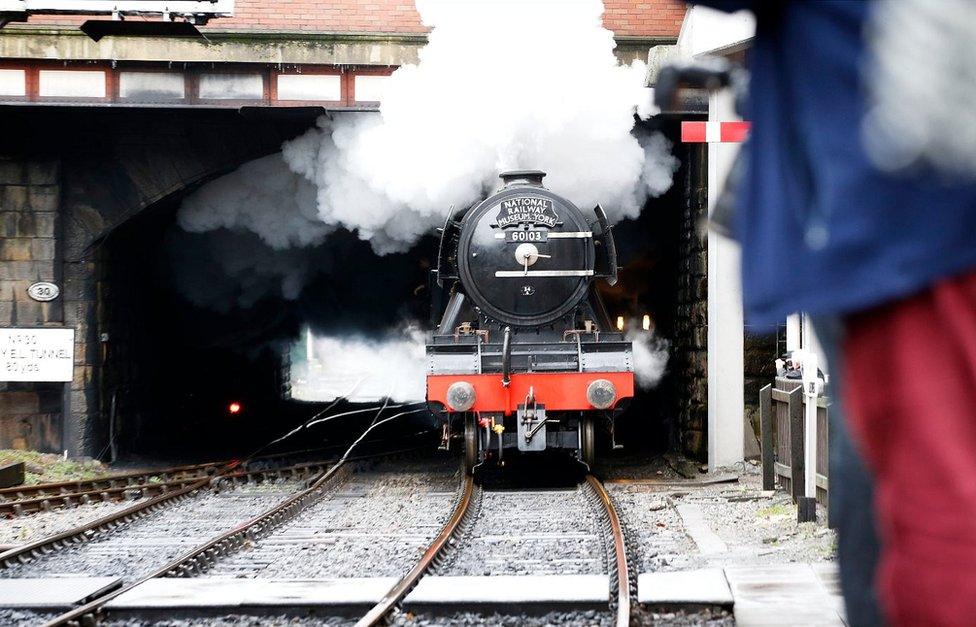
The engine, designed by Sir Nigel Gresley, was built by the London and North Eastern Railway (LNER) at Doncaster Works in 1923, at a cost of £7,944.
In 1934 it earned a place in the record books as the first steam locomotive to achieve an authenticated 100mph run.
- Published8 January 2016
